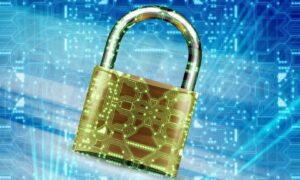The American criminal justice system is undergoing a significant transformation through the integration of advanced technologies, making it more efficient, transparent, and equitable. From law enforcement to courtrooms and corrections, technological innovations are reshaping how justice is administered while addressing long-standing challenges in the system.
One of the most impactful technological advances has been the widespread adoption of body-worn cameras by police departments across the nation. These devices provide an objective record of police interactions with the public, promoting accountability and transparency. When incidents occur, the footage serves as crucial evidence, helping to resolve disputes and build trust between law enforcement and communities. The presence of cameras has been shown to reduce use of force incidents and complaints against officers, while providing valuable training material for improving police practices.
DNA analysis technology has revolutionized both the prosecution and exoneration of suspects. Advanced genetic testing can now be performed on increasingly smaller samples, helping to solve cold cases that were previously considered unsolvable. Equally important, these same technologies have helped exonerate wrongfully convicted individuals through organizations like the Innocence Project. The growing sophistication of DNA databases has also enabled law enforcement to identify patterns and connect related crimes across jurisdictions, leading to more effective investigations.
Artificial intelligence and machine learning are emerging as powerful tools in predictive policing and risk assessment. These systems analyze vast amounts of data to identify crime patterns and allocate resources more effectively. However, their implementation requires careful oversight to prevent the perpetuation of existing biases in the criminal justice system. When properly designed and monitored, these tools can help law enforcement agencies deploy resources more efficiently while reducing discriminatory practices.
In the courthouse, digital case management systems have streamlined the processing of cases and improved access to justice; touching all the way down to the local bail bondsman. Electronic filing systems allow attorneys to submit documents remotely, while digital evidence presentation systems make it easier to share and examine evidence in court. Virtual court appearances, accelerated by the COVID-19 pandemic, have made the justice system more accessible to individuals who might otherwise face barriers to appearing in person, such as transportation issues or work conflicts.
The corrections system has also benefited from technological advancement. Electronic monitoring systems have enabled alternatives to incarceration, allowing non-violent offenders to serve sentences while maintaining employment and family connections. Within prisons, tablet-based education programs provide inmates with opportunities for rehabilitation and skill development, preparing them for successful reintegration into society.
Data analytics has emerged as a crucial tool for identifying and addressing systemic issues in the criminal justice system. By analyzing patterns in arrests, sentencing, and recidivism, authorities can identify disparities and implement evidence-based reforms. This data-driven approach has led to more targeted interventions and policy changes aimed at reducing racial and socioeconomic inequities in the system.
Cloud computing and improved information sharing systems have enhanced cooperation between different agencies and jurisdictions. Real-time access to criminal records, warrant information, and other crucial data helps law enforcement make more informed decisions in the field. This improved communication also helps prevent dangerous individuals from falling through the cracks of the system while ensuring that low-risk offenders receive appropriate interventions.
Forensic science has advanced beyond DNA analysis to include sophisticated tools for analyzing digital evidence, ballistics, and other physical evidence. Digital forensics has become particularly important as crimes increasingly involve electronic devices and online activities. These technologies provide investigators with new capabilities for solving crimes while ensuring that evidence meets scientific standards for admissibility in court.
The integration of mental health screening tools and assessment technologies has improved the identification and treatment of individuals with mental health challenges who become involved with the criminal justice system. This technology-enabled approach helps direct people to appropriate treatment programs rather than incarceration when appropriate, potentially breaking the cycle of recidivism while providing needed care.
Despite these advances, challenges remain in ensuring that technology serves justice rather than perpetuating existing problems. Privacy concerns, data security, and the potential for technological bias must be carefully balanced against the benefits of innovation. Additionally, the digital divide means that some communities may not have equal access to technology-enabled services and protections.
Looking ahead, emerging technologies like blockchain could further transform the criminal justice system by providing secure, transparent records of evidence handling and court proceedings. Virtual reality systems may offer new approaches to training law enforcement officers and rehabilitating offenders. As these technologies continue to evolve, their successful implementation will require ongoing collaboration between technologists, legal experts, and community stakeholders.
The integration of technology into the American criminal justice system represents a significant opportunity to address long-standing challenges while improving efficiency and fairness. However, realizing these benefits requires careful attention to implementation, oversight, and equal access. As technology continues to advance, its thoughtful application can help create a more just and equitable system for all Americans.



































